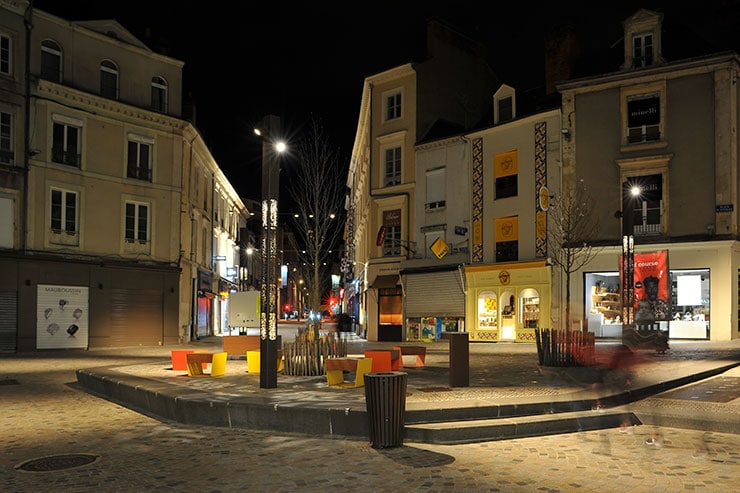- ABOUT
- JUDGING
- CONTACT
- MORE
- 2024 Entries
- Installations 2024
- Past Winners
- Subscribe
- [d]arc directory
- arc magazine
- darc magazine
Ariadnê, France
ProjectAriadnêLocationLe Mans, FranceLighting Designatelier coup d'éclat, FranceClientLe Mans MétropoleLighting SuppliersEwo, Technilum, Targetti
In Greek mythology, the Ariadne’s thread allows Theseus to find his way back to the labyrinth of Daedalus after having confronted the Minotaur.
The lighting scenario is inspired by this classic to propose a nocturnal reading of the Saint Nicolas neighbourhood that is at once pragmatic, provocative and poetic.
To provide an answer to the functional question, taking into account the elements evoked in the diagnosis, the first action aims to deploy a veil of light over the entire perimeter. The purpose of this veil of light is to deposit a warm, soft light with the most uniform possible spatial distribution along the paths of the “labyrinth” while having a minimal impact on the architecture.
Thus all pedestrian traffic has the same functional and qualitative basis.
The external accesses, the thresholds, are the attractors that represent the district and ensure its night-time posture throughout the city.
Inside, the historical axes structure and define the Saint Nicolas district. Dedicated signage “increases” the veil accompanying towards, or away from, the golden triangle composed of the three central squares.
These squares are the treasures of the district. In the centre of the maze, skylights take their place, night-time attractions with a light and permeable daytime presence.
A simple and refined catenary structure with multiple variations serves the project.
These wires are the support of a more or less important density of devices with reduced dimensions, privileging by the number a uniformity of lighting (the “veil”) as well as a control of luminances (glare) and undesirable lights.
Rather than relying on a single grid, the aim is to reproduce a starry sky in the streets of the Saint Nicolas district. The definition of such an “exploded” structure makes it possible, among other things, to integrate here an accessory, a beacon, or an architectural accent.
Stretching from facade to facade, they have the advantage of completely freeing up the rights-of-way on the ground, without constraining the necessary access for the fire department.
The definition of adapted optics makes it possible to treat the veil in a “higher” state of the art:
The illuminance oscillates between 10 and 15 lux and, at the same time, particular attention is paid to the uniformity of the veil, which is greater than 55%.
Finally, the decomposition of the sources means that no facades are illuminated and the stretched cable installation ensures total flatness of the projectors and therefore zero direct upward light emission.








